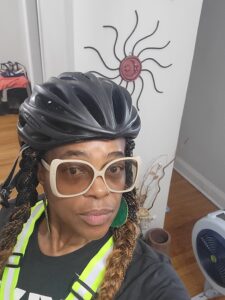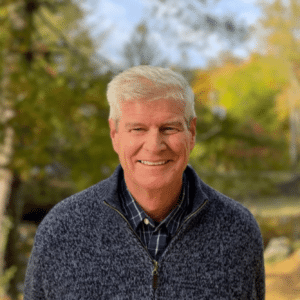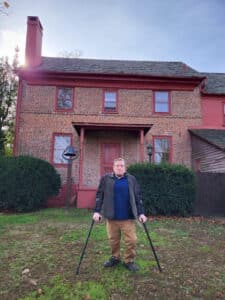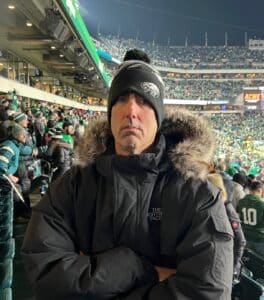Safe Passing Laws Are Common Sense
by Cyndi Steiner & Aaron Hyndman
A May 22, 2015 editorial by the Asbury Park Press called Assembly bill A1600/A1577, the Safe Passing Bill, a “wrongheaded proposal.” Instead of passing a bill that would codify into law the mechanics of negotiating a safe pass, thus ensuring that a pedestrian or bicyclist is not hit by a car, the APP thinks drivers should simply be expected to use common sense.
What exactly does it mean for drivers to use common sense? Here are some other examples: Stop for pedestrians in crosswalks; stop at intersections where there are stop signs and traffic lights; use your directional signals when making a turn; yield when entering fast moving traffic. Certainly, these are simply rules of the road that shouldn’t need much explanation, and yet, the precedent has been set that these measures should be more than just common sense. Instead of relying on “common sense,” they have been established as law by the State of New Jersey.
Why then would the Safe Passing Law not be similarly deserving of enactment? Clearly Senator Nicholas Sacco, the legislator who is obstructing the bill by holding it up in committee, seems unable to grasp the mechanics of a safe pass, illogically deeming it unworkable in cities and towns with narrow streets. But unfortunately, the lack of understanding of the dynamics of road sharing seems to also extend to the Asbury Park Press Editorial Board. In their column, they write: “All too often, that 4 feet would force motorists in the wrong lane, facing oncoming traffic. How safe is that?”
The current state of vehicle traffic in New Jersey is such that most motorists are already accustomed to moving over as they pass bike riders and pedestrians in the roadway. However, all it takes is one driver not to pass safely, and the results can be catastrophic. Given the condition of New Jersey roads, bike riders are forced to navigate and maneuver around life-threatening obstacles with alarming regularity. As vulnerable users, bike riders and pedestrians deserve to be protected, and it’s entirely appropriate for such protection to be codified in state motor vehicle law.
It’s also not unreasonable to expect drivers to easily negotiate a brief maneuver into the opposing traffic lane. This is something that is safely done with regularity, be it on rural roads when cars pass a slow-moving truck or farm vehicle, or in urban settings when a driver moves over to get around a double-parked car or a service vehicle. Over 19,500 bicycle accidents occurred in New Jersey’s 13 northern counties between 2001 and 2011. Last year 170 pedestrians were killed on the state’s roadways, making NJ one of the worst states in the nation for pedestrian safety. Instances where vehicles collide as a result of passing a bicycle or pedestrian are extremely few and far between. The editorial’s notion that the Safe Passing Law would cause a driver, obliged to follow the letter of the law, to suddenly abandon the use of a functioning brake pedal in favor of avoiding a vulnerable road user by blindly swerving into oncoming traffic is almost laughable.
Unfortunately though, the APP Editorial Board takes their ill-conceived notions regarding traffic flow a step further and suggest that “if there is no shoulder, or a narrow one that requires riding in a lane of traffic,” bike riders should “find another route,” and that “if there are no better options for getting from point A to point B, towns should create bike paths.” Not only is this idea contrary to the law in all 50 states which declares that bicycles are deserving of the same rights to a roadway as motor vehicles, this line of thinking threatens to undo much of the progress made toward complete streets and safe roads for bike riders. Ironically, the APP Editorial Board proposes complete streets plans as the solution in a scenario where there is no safe passing law, and on roads that do not provide accommodations for all users, with non-motorized users as second class citizens. This is folly. The editorial board remained silent on what pedestrians are supposed to do when there are no sidewalks or other road infrastructure that would enhance pedestrian safety. Are pedestrians supposed to walk somewhere else also?
The Editorial Board’s comments show a fundamental lack of understanding of who is riding bicycles and who is walking in the roadway. Bike riders, in addition to riding for recreation and exercise, also use bikes as transportation, and often these riders have no other choice, as car ownership and public transportation are out of their reach. These riders are to go ride somewhere else, instead of being able to safely pedal to their jobs, to run errands and otherwise use their bikes to provide for their families? Likewise with pedestrians using the roadways where there are no sidewalks; often this is not a matter of choice, but of necessity due to their economic circumstances. Again, they should go walk somewhere else, regardless of whether or not it gets them to their destination?
It’s a self-defeating argument for the APP to assert that an emphasis on complete streets policies should render a Safe Passing Law unnecessary. Casting aside the legal precedent that establishes bicycle riders as vehicles fully-deserving of necessary safety protections does no favors to complete streets advocates; it only makes it more difficult to convince policy makers that bikes belong on the road in the first place. And in an era of cash-strapped governments, with New Jersey’s Transportation Trust Fund rapidly running out of money, should we really expect that funding can be procured for the thousands of miles of off-road bike paths that the APP Editorial Board suggests as an alternative to safe and effective road sharing? Even if there were off-road bike paths, there is no law in the state that requires bike riders to use them instead of the roadway.
First and foremost, it should be stated that a Safe Passing Bill is not the be-all-and-the-end-all of ensuring the safety of riders and pedestrians who have to navigate roadways populated with automobiles. But it is a start towards raising both the awareness among the general public of a bike rider’s legal right to use the roadway, and the likelihood that there will be bike riders and pedestrians in the roads. NJBWC, along with partners Tri-State Transportation Campaign and AAA, have proposed amending the language of the Safe Passing Bill to clarify that a driver should, if necessary, slow down and overtake the bicyclist or pedestrian when it is safe to do so. Slowing down, providing a safe passing distance, and moving over into the oncoming traffic lane is done now on roads throughout the state- urban, suburban and rural – under many different conditions: when a vehicle is double parked, when someone has opened their car door and is exiting, when emergency vehicles are stopped, and when mail trucks, delivery vehicles, garbage trucks, farm machinery and other service vehicles are performing their tasks and are stopped on the side of the road. If we can safely pass these vehicles in the roadway, we should be able to do that for people. Now that is common sense.
Cyndi Steiner is the Executive Director of the New Jersey Bike & Walk Coalition. Aaron Hyndman serves as the organization’s Communications Coordinator.















































































